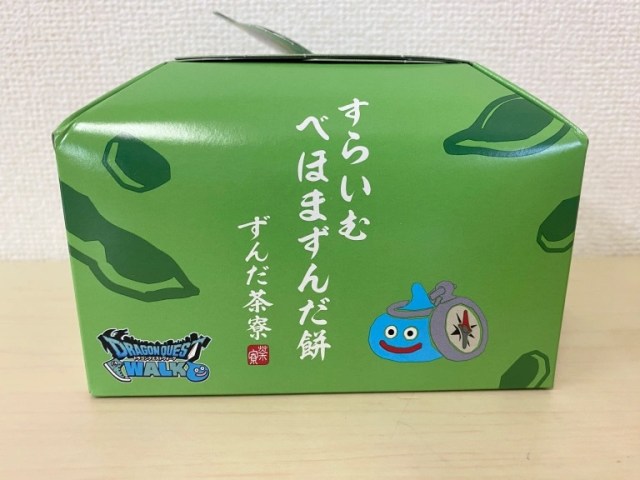
Sweet edamame Slimes draw near to our stomachs as Dragon Quest teams up with maker of northeastern Japan’s most famous traditional dessert,
In most countries, “Hey, this food looks like slime!” wouldn’t exactly be a selling point for a confectioner. In Japan, though, where the Dragon Quest video game franchise is a pop culture institution, a resemblance between your desserts and capital-S Slimes, the series’ mascot monsters, can out smiles on faces and growling in stomachs.
And so it is that Kasho Sanzen, a Japanese sweets maker in the city of Sendai that’s been around since 1947, is selling boxes of sweet Slime dumplings.
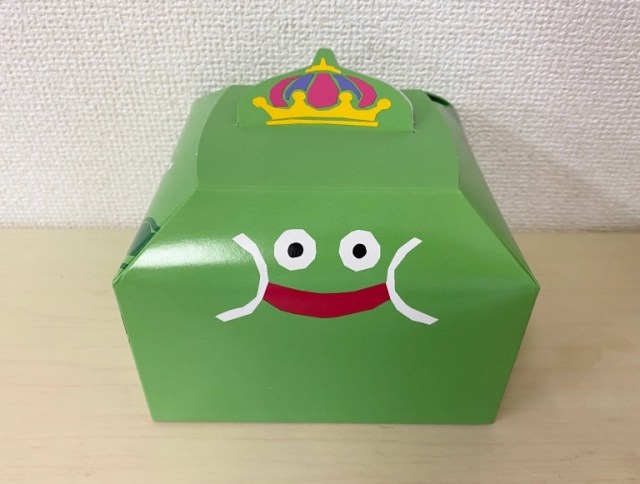
Called the Slime Behoma Zunda Mochi, the set consists of eight of the traditional sweets called zunda mochi, the representative dessert of Sendai and the surrounding Miyagi Prefecture. Why eight? Because in Dragon Quest, when eight Slimes get together they can combine to form a King Slime, which is the species depicted on the front of the box.
Meanwhile, around the side…
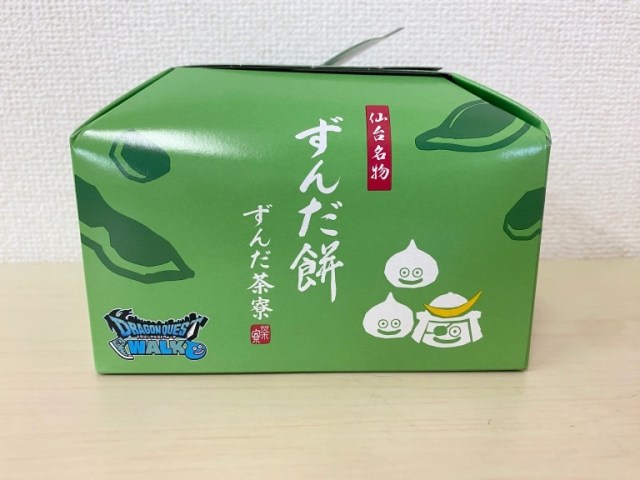
…is a Slime version of Date Masamune, the local samurai lord known as the One-Eyed Dragon whose battlefield attire included an eyepatch and distinct crescent-ornamented helmet.
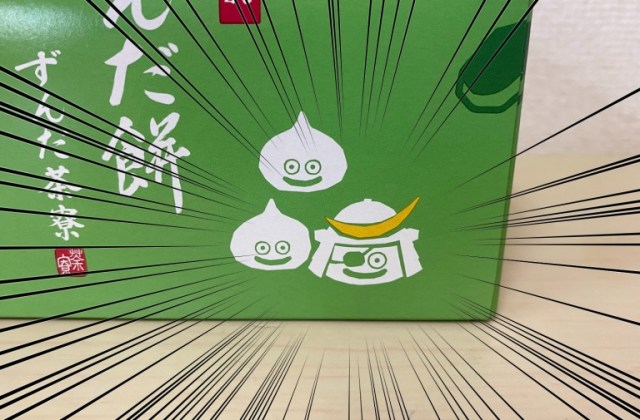
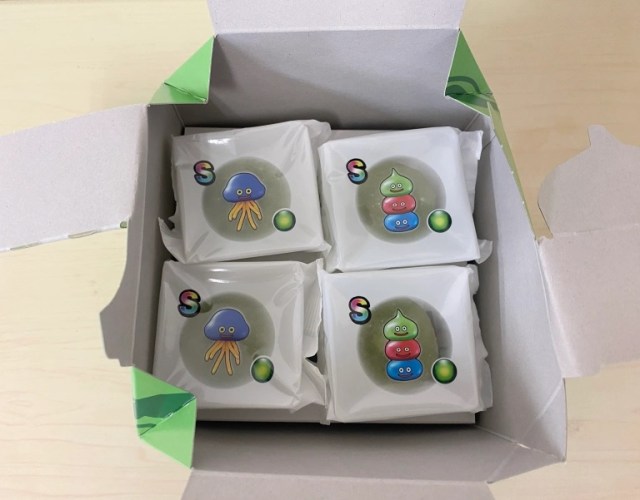
Opening up the box reveals the individual Slimes/mochi cakes. A total of four illustrations are featured on the wrappers, representing different slime variants. You might also notice a colorful “S” in the upper left corner.
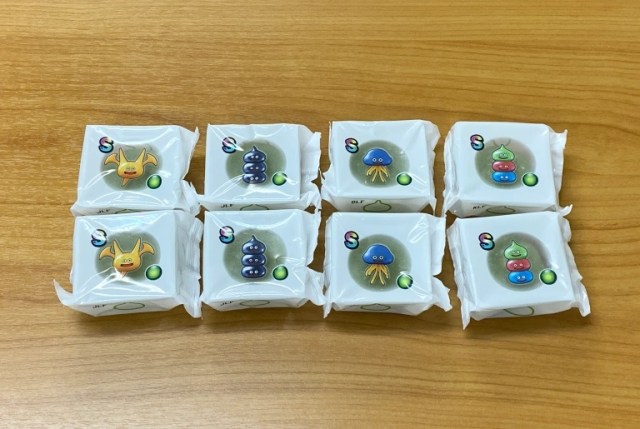
This isn’t short for “Slime,” though, but a reference to S designating a high level of rarity or power in Japanese video games. These zunda mochi Slimes are part of a tie-up between Kasho Senzan and GPS-based mobile game Dragon Quest Walk, and the sweets are available as a possible prize for completion of in-game quests in the Sendai area or for purchase through Kasho Senzan’s online shop (which is how we got ours).
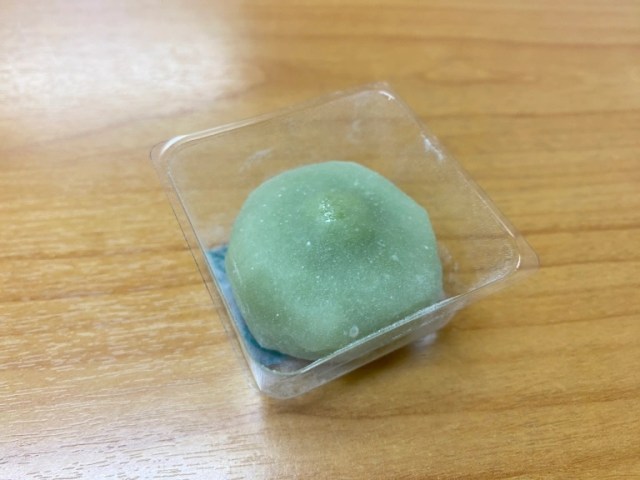
Zunda mochi gets its green color from the use of edamame soybeans, which are mashed into a paste which is then used to cover a mochi rice cake at the center. Even in their normal form, zunda mochi’s soft texture and semi-spherical shape makes them look like Slimes, but we’re pretty sure Kasho Senzan has gone the extra mile with these ones by giving them a pointy tip that makes the resemblance even stronger. As a matter of fact, we felt just a twinge of guilt biting into them, but like a Level 1 hero who needs to fight Slimes to gain experience and level up, we hardened our hearts and bit into one.
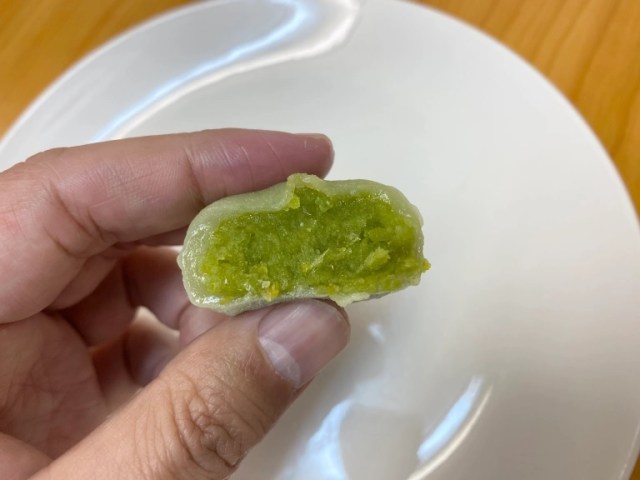
The inside is even more vibrantly verdant, and the flavor is both delicious and sophisticated. Compared to Japanese desserts made with azuki (sweet red beans), zunda mochi has an earthier, more bean-like flavor. It’s often described by foodies in Japan as having a moyamoya flavor, meaning “hazy” or “indistinct,” because of how it straddles sweet, salty, and bitter flavors. There’s really nothing else quite like it, and if the combination of tastes works for you, you’ll probably be reaching for a second zunda Slime as soon as you finish your first.
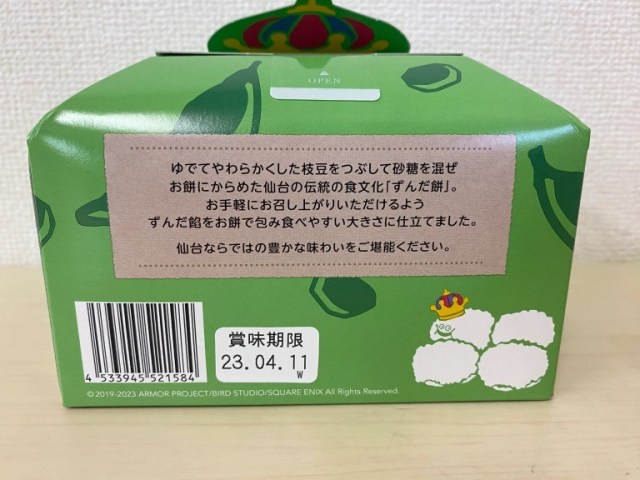
You might want to pace yourself, though, because the Slime Behoma Zunda Mochi isn’t easy to come by. Each day a new batch goes on sale on the Kasho Senzan online store at 10 a.m. and they often sell out in less than five minutes. It took us several days of trying before we managed to get ours, but it was worth the trouble, and since they’ll be on sale until May 31, you’ve still got plenty of chances to get some for yourself. The set is priced at 1,480 yen (US$11.30) and can be ordered here, and while you’re at it, don’t forget that Kasho Senzan has another must-eat Sendai sweet too.
Photos ©SoraNews24
● Want to hear about SoraNews24’s latest articles as soon as they’re published? Follow us on Facebook and Twitter!

No hay comentarios:
Publicar un comentario